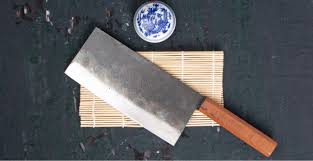The Role of Cleaver Knives in Asian Cuisine: A Cultural Perspective
Cleaver knives hold a special place in Asian cuisine, where they are not only essential kitchen tools but also symbols of culinary artistry and cultural heritage. Used by chefs and home cooks alike, cleaver knives are versatile and powerful, reflecting the rich traditions and diverse culinary practices across Asia. This article explores the cultural significance and practical roles of cleaver knives in Asian cuisine.
Historical Significance of Cleaver Knives
Origins and Evolution
Cleaver knives have a long history in Asian culinary traditions. Originating in China, they were initially crafted for butchering and preparing large cuts of meat. Over time, these knives evolved to become multi-functional tools, integral to the preparation of a wide range of dishes.
Symbol of Culinary Skill
In many Asian cultures, the cleaver knife is a symbol of a chef’s skill and expertise. Mastery of the cleaver knife is often associated with professional chefs who demonstrate precision and technique in their cutting methods. The cleaver is not just a tool but an extension of the chef’s hand, allowing for intricate and efficient preparation.
Types of Cleaver Knives in Asian Cuisine
Chinese Cleaver (Cai Dao)
The Chinese cleaver, also known as “cai dao,” is the most iconic type of cleaver in Asian cuisine. It is characterized by its broad, rectangular blade and is used for various tasks such as chopping, slicing, dicing, and mincing. The weight and sharpness of the cai dao make it ideal for cutting through tough vegetables, meat, and even bones.
Japanese Cleaver (Nakiri and Deba)
- Nakiri: The nakiri is a Japanese vegetable cleaver with a thin, straight blade designed for precise vegetable cutting. It excels in tasks requiring delicate slicing and dicing of vegetables and herbs.
- Deba: The deba is a heavier Japanese cleaver used primarily for fish butchery. Its sturdy blade can handle cutting through fish bones and filleting, making it essential in Japanese seafood preparation.
Korean Cleaver (Kimchi Knife)
In Korean cuisine, the cleaver, often referred to as a kimchi knife, is used for preparing kimchi and other fermented vegetables. Its wide blade is perfect for slicing cabbage and other ingredients required for making traditional kimchi.
Cultural Roles and Practices
Everyday Use
In many Asian households, a cleaver knife is the go-to tool for a variety of kitchen tasks. Its versatility allows it to be used for everything from chopping meat and vegetables to crushing garlic and ginger. The cleaver’s design makes it suitable for both heavy-duty and delicate tasks, making it an indispensable kitchen companion.
Culinary Arts and Demonstrations
Cleaver knives are often featured in culinary demonstrations and competitions, showcasing the chef’s precision and skill. These events highlight the cultural importance of the cleaver knife in Asian cuisine and celebrate the artistry involved in its use.
Traditional Dishes
Cleaver knives play a crucial role in preparing traditional Asian dishes. For example:
- Peking Duck: The cleaver is used to carve the crispy duck into thin slices, demonstrating the precision required in Chinese culinary traditions.
- Sushi and Sashimi: Japanese chefs use specialized cleavers to expertly fillet fish, ensuring clean cuts for sushi and sashimi.
- Kimchi: In Korea, the cleaver is essential for chopping and preparing the ingredients for kimchi, a staple in Korean cuisine.
Modern Adaptations and Innovations
Fusion Cuisine
As Asian cuisine continues to influence global culinary trends, cleaver knives have found their place in fusion kitchens. Chefs around the world are adopting cleaver knives to prepare dishes that blend Asian techniques with other culinary traditions, showcasing the versatility and efficiency of these tools.
Technological Advancements
Modern cleaver knives incorporate advanced materials and ergonomic designs, enhancing their functionality and ease of use. High-carbon stainless steel and composite handles improve durability and comfort, making cleaver knives more accessible to both professional chefs and home cooks.
Conclusion
The cleaver knife is more than just a kitchen tool in Asian cuisine; it is a cultural icon that represents tradition, skill, and culinary artistry. From its historical origins to its modern adaptations, the cleaver knife continues to play a vital role in the preparation of Asian dishes. By understanding and appreciating the cultural significance of cleaver knives, we gain a deeper insight into the rich culinary heritage of Asia and the artistry involved in its cuisine.



